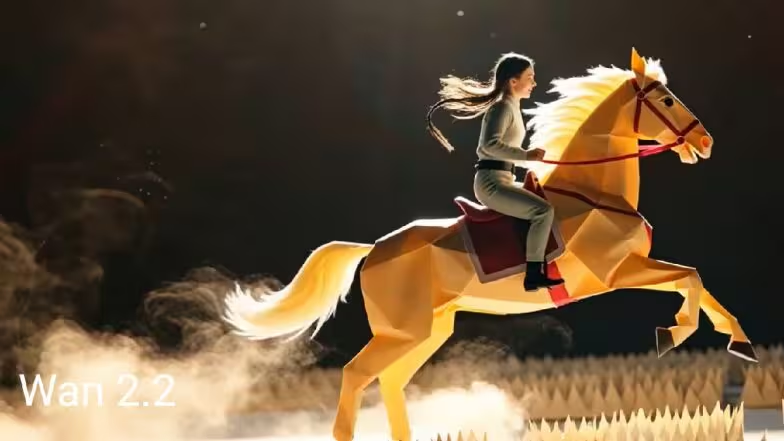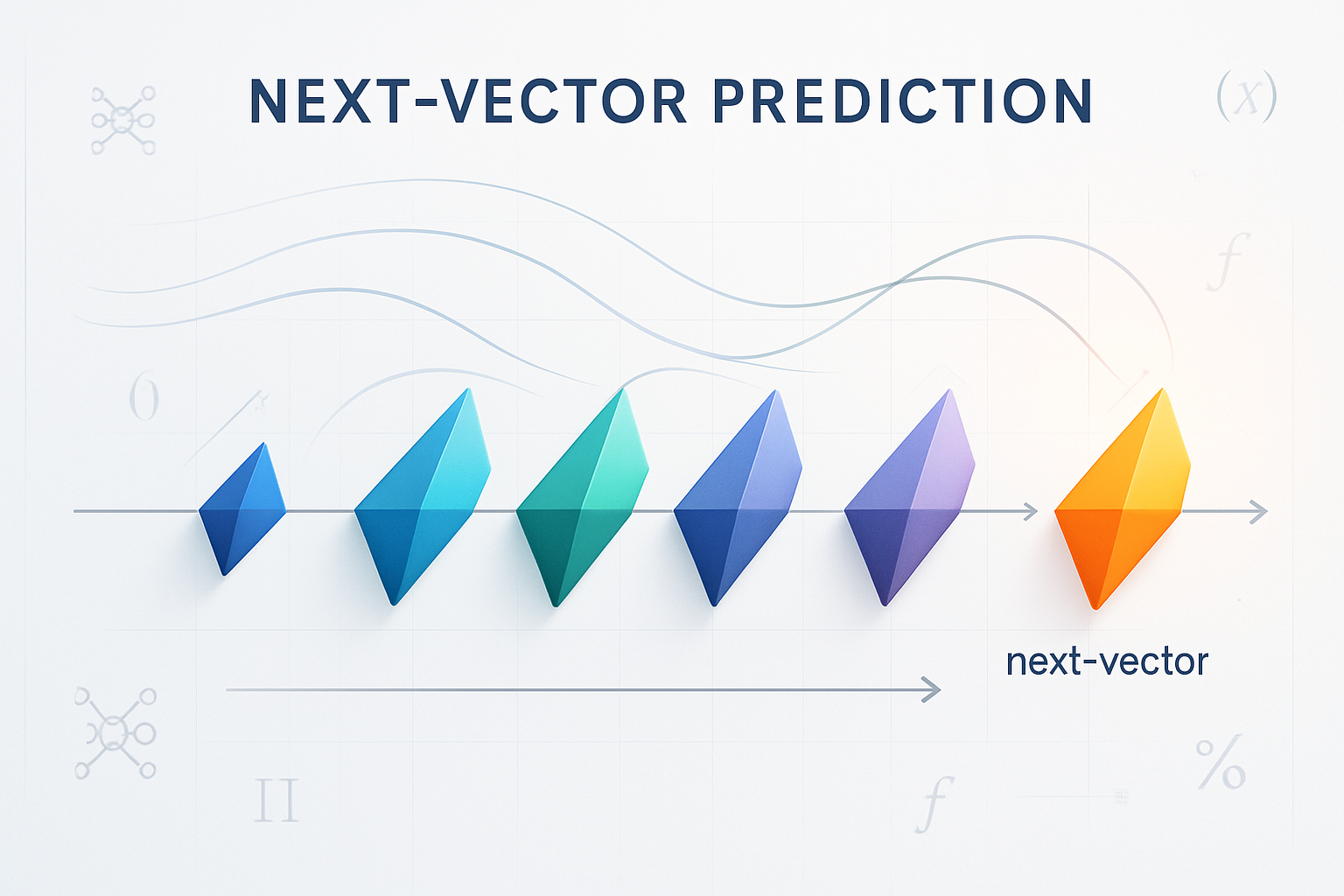Picture this: you’re sitting in your home studio, armed with nothing more than a consumer-grade GPU and an imagination that refuses to be constrained by traditional filmmaking budgets. Within minutes, you’re conjuring up cinematic sequences that would have required Hollywood-level resources just months ago. This isn’t science fiction—it’s the reality that Alibaba’s Wan 2.2 has unleashed upon the creative world.
Released on July 29, 2025, Wan 2.2 represents far more than an incremental upgrade to AI video generation. It’s a seismic shift that’s reverberating through creative industries, academic institutions, and independent studios worldwide. Unlike its proprietary counterparts that gate advanced capabilities behind expensive subscriptions and cloud dependencies, Wan 2.2 arrives with the audacious promise of democratization—complete with an Apache 2.0 license that grants unfettered commercial use.
But what transforms this latest offering from Alibaba’s Tongyi Wanxiang Lab into something genuinely revolutionary? The answer lies in an architectural innovation that’s been making waves in language models but has never before been successfully applied to video generation: the Mixture-of-Experts framework. This isn’t merely about generating prettier videos—it’s about fundamentally reimagining the computational economics of professional-grade content creation.

Decoding the Mixture-of-Experts Revolution: Two Brains, One Vision
The technical elegance of Wan 2.2’s architecture reads like a masterclass in computational efficiency. While traditional video diffusion models lumber along with monolithic networks processing every aspect of generation uniformly, Wan 2.2 employs what HackerNoon describes as “specialized experts for different phases of generation”—a revolutionary approach that’s never been attempted in open-source video models.
Think of it as orchestrating a symphony where different musicians excel at different passages. The first expert—let’s call it the “visionary”—specializes in high-noise stages, laying out compositional frameworks, establishing motion trajectories, and defining the broad cinematic strokes. Meanwhile, the second expert—the “perfectionist”—takes command during low-noise phases, meticulously refining textures, perfecting lighting gradients, and ensuring every detail meets cinematic standards.
This architectural sleight-of-hand allows Wan 2.2 to maintain a staggering 27 billion parameters while only activating 14 billion per inference step. The computational implications are profound: you’re essentially getting the creative capacity of a massive model while consuming resources comparable to a much smaller one. It’s computational alchemy—transforming efficiency constraints into quality advantages.
The genius isn’t just in the numbers. By separating coarse layout planning from fine detail refinement, the model achieves something that has eluded video generation AI for years: consistent, coherent cinematic quality without the traditional computational penalties. Adam Holter notes this represents “the first time MoE has been applied effectively to video generation,” establishing a new paradigm for how we approach resource-intensive creative AI.
Cinematic Mastery: When AI Learns the Language of Film
What elevates Wan 2.2 from a mere technical achievement to a creative powerhouse is its sophisticated understanding of cinematic aesthetics. The model didn’t just consume random internet videos during training—it underwent what amounts to film school, complete with meticulously curated aesthetic data, complete with detailed labels for lighting, composition, contrast, color tone, and more.
This curatorial approach transforms the AI from a pattern-matching engine into something approaching a digital cinematographer. When you prompt Wan 2.2 for “a nighttime street scene with neon-lit cyberpunk atmosphere, shot with a wide-angle lens and dramatic low-key lighting,” the model doesn’t just recognize these as abstract descriptors.
It understands the interplay between lens choice and perspective distortion, the relationship between lighting temperature and emotional tone, the way shadows should behave in neon-saturated environments.
The training dataset expansion tells its own story of ambition. Compared to Wan 2.1, the new model trained on 65.6% more images and 83.2% more videos, each element carefully selected and labeled for specific cinematic qualities. This isn’t just about quantity—it’s about teaching the AI the subtle grammar of visual storytelling.
Users on various forums have described experiencing something almost uncanny when working with Wan 2.2’s style controls. One Reddit discussion highlighted how the model seems to “understand” directorial intent in ways that proprietary alternatives often miss. Whether you’re seeking the warm, honeyed tones of golden hour cinematography or the stark, high-contrast drama of film noir, Wan 2.2 responds with a precision that suggests genuine comprehension rather than mere statistical correlation.
Performance That Redefines Accessibility
Raw capability means nothing without accessibility, and this is where Wan 2.2’s engineering truly shines. The model’s efficiency achievements read like a wish list for independent creators: 5-second 720p video generation in under 9 minutes on a single RTX 4090. Let that sink in—professional-grade video synthesis on hardware that, while premium, sits within reach of serious individual creators.
But the accessibility story goes deeper than single-GPU compatibility. Vadoo TV’s analysis reveals that Wan 2.2 offers multiple model variants tailored to different hardware configurations. The full 27B MoE model serves those with high-end rigs seeking maximum quality, while the streamlined 5B variant democratizes access for users with more modest setups. This tiered approach ensures that creative potential isn’t gated by hardware budgets.
The computational magic happens through what Stable Diffusion Art describes as an “advanced 3D VAE compression module” achieving a 16×16×4 compression ratio. This isn’t just technical jargon—it represents a fundamental breakthrough in how video data gets processed. By operating in this highly compressed latent space, the model achieves remarkable efficiency without sacrificing the detailed fidelity that makes its output genuinely cinematic.
Performance benchmarks tell a compelling story. Testing across different GPU configurations shows that while premium hardware like the H100 delivers fastest results, even more accessible options like the RTX 4090 produce professional-quality output in timeframes that enable genuine creative iteration. This performance profile transforms video generation from an expensive, time-intensive process into something approaching real-time creative exploration.
Training at Scale: The Foundation of Excellence
The sophistication of Wan 2.2’s outputs doesn’t emerge from algorithmic wizardry alone—it’s built upon a foundation of unprecedented training scale and diversity. The model’s capabilities in handling complex motion and dynamic scenes stem from this massive expansion in training data, representing what may be the most comprehensive video training dataset assembled for an open-source model.
This scale manifests in tangible quality improvements. Earlier video generation models often struggled with temporal consistency—objects would morph unexpectedly, lighting would shift incoherently, and motion would appear stilted or unnatural. Wan 2.2’s expanded training enables it to understand not just what objects should look like, but how they should behave over time. Physics becomes intuitive rather than approximate.
The semantic consistency improvements are particularly notable. When generating complex scenes with multiple moving elements, Wan 2.2 maintains logical relationships between objects, preserves character identities across frames, and ensures that actions flow naturally from one moment to the next. HackerNoon’s coverage emphasizes how these improvements position Wan 2.2 as achieving “TOP performance among all open-sourced and closed-sourced models” on internal benchmarks.
But perhaps most significantly, this training scale enables genuine creative expression rather than mere technical demonstration. The model can handle narrative complexity, emotional nuance, and stylistic consistency in ways that transform it from a tool for generating video clips into a platform for visual storytelling.
Real-World Impact: Creative Applications Unleashed
The true measure of any creative technology lies not in its technical specifications but in the work it enables. Across industries, early adopters of Wan 2.2 are discovering applications that extend far beyond traditional video generation use cases.
In advertising and marketing, the model’s combination of speed and quality is revolutionizing content production workflows. Marketing teams report being able to generate multiple creative variations for campaigns, test different visual approaches, and produce finished content at scales previously impossible without major production budgets. The ability to generate high-quality product showcases, animated explanations, and brand content directly from text descriptions is transforming how creative agencies approach client work.
Educational content creators have embraced Wan 2.2’s ability to visualize complex concepts and historical scenarios. History teachers can generate period-appropriate scenes, science educators can illustrate abstract phenomena, and language instructors can create immersive cultural contexts. The model’s multilingual capabilities, inherited from its training diversity, make it particularly valuable for global educational initiatives.
In the entertainment industry, independent filmmakers and content creators are using Wan 2.2 for previsualisation, concept development, and even finished production elements. The model’s cinematic understanding makes it particularly effective for storyboarding complex sequences, exploring different visual approaches, and creating compelling proof-of-concept materials for larger projects.
Game development studios have found unexpected applications in concept art generation and cinematic creation. The model’s ability to maintain visual consistency while generating dynamic sequences makes it valuable for creating game trailers, promotional materials, and even in-game cutscenes.
The Competitive Landscape: Open Source vs. Proprietary Giants
Wan 2.2’s arrival has fundamentally altered the competitive dynamics of AI video generation. Where proprietary platforms like Runway’s Gen-2 and Pika Labs once dominated through superior quality and features, Wan 2.2 introduces a compelling open-source alternative that matches—and in many cases exceeds—their capabilities.
The comparison reveals stark philosophical differences in approach. Runway’s Gen-2, praised for its “realistic human motion and subtle camera movements,” operates within a cloud-dependent ecosystem that requires ongoing subscription costs and limits user control. Pika Labs offers dynamic animations and user-friendly interfaces but similarly restricts access through usage-based pricing models.
Wan 2.2 obliterates these constraints. Its open-source nature means no subscription fees, no usage limits, and complete transparency in how the model operates. Users can examine the code, modify the algorithms, and integrate the technology into their own applications without legal restrictions or vendor dependencies. This freedom isn’t just philosophical—it’s practical, enabling use cases that proprietary platforms cannot accommodate.
Quality comparisons increasingly favor the open-source approach. Community discussions on Reddit highlight how Wan 2.2’s outputs often surpass proprietary alternatives in consistency, detail fidelity, and stylistic coherence. Some users report that even individual frames from Wan 2.2 videos demonstrate higher photorealism than outputs from dedicated image generation models.
The hardware accessibility factor cannot be overstated. While cloud-based proprietary services require ongoing costs and internet connectivity, Wan 2.2’s efficiency enables local generation on consumer hardware. This shift represents more than convenience—it’s creative independence, allowing users to work without external dependencies or cost concerns.
Technical Innovation: Beyond Current Capabilities
Wan 2.2’s technical achievements extend beyond its headline features into areas that hint at future possibilities. The model’s unified architecture supporting text-to-video, image-to-video, and hybrid text-image-to-video generation represents a significant advancement in multimodal AI systems.
This flexibility enables creative workflows that were previously impossible. Users can start with a text description, generate an initial frame, then use that frame as input for extended video generation—all within a single, coherent system. The ability to seamlessly transition between modalities opens up new possibilities for iterative creative development and collaborative content creation.
The model’s integration capabilities are equally impressive. Day-one compatibility with ComfyUI and availability through the HuggingFace diffusers library demonstrates how open-source development can accelerate adoption and innovation. Rather than waiting for official integrations or third-party adaptations, the community immediately began building tools, sharing workflows, and exploring creative applications.
Advanced features like LoRA (Low-Rank Adaptation) training support enable users to fine-tune the model for specific styles, subjects, or aesthetic preferences. This customization capability transforms Wan 2.2 from a general-purpose tool into a personalized creative assistant that can learn and adapt to individual artistic visions.
Economic Implications: Democratizing Professional Creation
The economic disruption potential of Wan 2.2 extends far beyond the AI industry into the broader creative economy. By making professional-quality video generation accessible to individual creators and small studios, the model is lowering barriers to entry across numerous creative fields.
Traditional video production involves significant upfront costs: equipment, software, personnel, and post-production resources. Wan 2.2 compresses much of this pipeline into a single tool that runs on consumer hardware. While it doesn’t replace all aspects of professional production, it eliminates many barriers that have historically limited creative participation to well-funded entities.
The implications for content marketing are particularly profound. Small businesses can now generate professional-quality promotional materials, product demonstrations, and brand content without requiring specialized production teams or significant budgets. This democratization could level competitive playing fields in industries where visual content quality has been a key differentiator.
For educational institutions and non-profit organizations, Wan 2.2’s capabilities represent access to visual storytelling tools that were previously cost-prohibitive. The ability to create compelling educational content, awareness campaigns, and advocacy materials could significantly amplify the impact of resource-constrained organizations.
Ethical Considerations and Future Responsibilities
The democratization of powerful video generation capabilities inevitably raises important ethical questions. Wan 2.2’s ability to create photorealistic content brings both creative opportunities and potential for misuse. The model’s open-source nature means that traditional content filtering and safety measures may not apply, placing greater responsibility on users and the broader community.
However, this openness also enables transparency and accountability in ways that proprietary systems cannot match. Researchers can examine the model’s behavior, identify potential biases or problematic outputs, and develop solutions collaboratively. The open-source community has historically proven effective at addressing such challenges through collective effort and shared responsibility.
The creative community’s response suggests a mature understanding of these responsibilities. Early adopters are already developing best practices, sharing ethical guidelines, and creating resources to help users navigate the technology responsibly. This self-governing approach may prove more effective than top-down restrictions in ensuring beneficial applications.
Looking Forward: The Next Phase of AI Video Evolution
Wan 2.2’s release marks not an endpoint but a beginning. The model’s open-source nature virtually guarantees continued development, refinement, and expansion through community contributions. We can anticipate improvements in generation speed, quality, and capabilities as the community explores the technology’s potential.
The technical foundations laid by Wan 2.2’s Mixture-of-Experts architecture suggest pathways for future innovations. Longer-duration video generation, higher resolutions, and more sophisticated control mechanisms all become viable as the underlying efficiency improvements enable more ambitious applications.
Perhaps most intriguingly, the model’s success may inspire similar open-source initiatives in related fields. The demonstrated viability of community-driven development for complex AI systems could accelerate progress across numerous domains, from audio generation to interactive media creation.
The integration possibilities are equally exciting. As Wan 2.2 becomes embedded in creative workflows, we may see the emergence of new hybrid applications that combine AI video generation with other tools and platforms. The potential for AI-assisted storytelling, automated content creation, and interactive media experiences has only begun to be explored.
Conclusion: A New Creative Paradigm
Wan 2.2 represents more than a technical achievement—it embodies a fundamental shift in how we approach creative technology. By combining cutting-edge capabilities with open accessibility, the model demonstrates that the most powerful creative tools need not be the exclusive domain of large corporations or well-funded institutions.
The true legacy of Wan 2.2 may lie not in the videos it generates today but in the creative possibilities it unleashes tomorrow. By removing traditional barriers to professional-quality video creation, the model empowers a new generation of storytellers, educators, artists, and entrepreneurs to bring their visions to life.
As we stand at this inflection point, the question isn’t whether AI will transform creative industries—it’s how quickly and equitably that transformation will occur. Wan 2.2 suggests that the future belongs not to those who hoard advanced capabilities but to those who share them, creating opportunities for innovation and expression that benefit everyone.











Comments 1